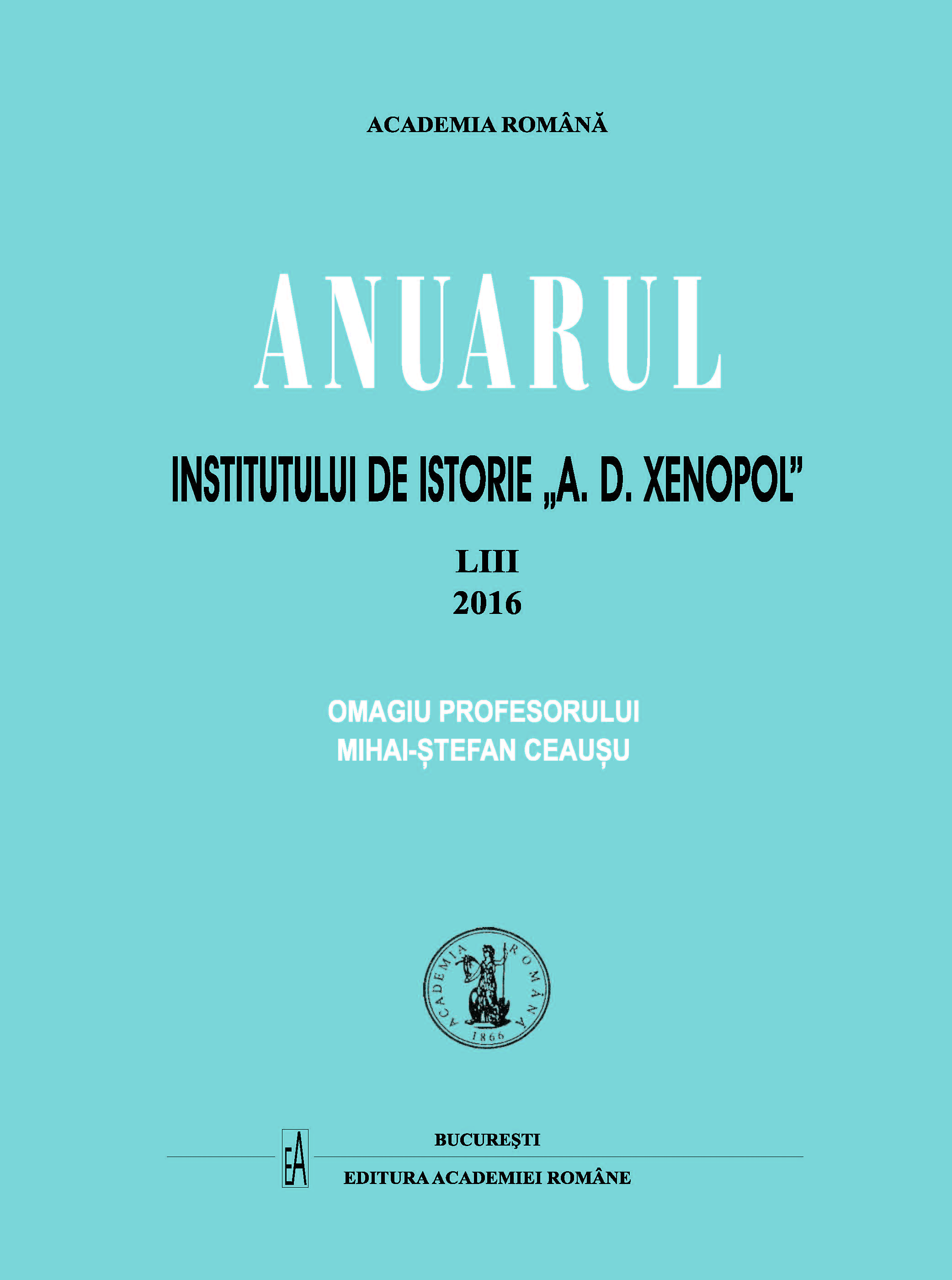„NEAMUL ROMÂNESC” ȘI IMAGINEA BISERICII CATOLICE DIN ROMÂNIA ÎN TIMPUL ARHIEPISCOPULUI RAYMUND NETZHAMMER (1905−1924)
“NEAMUL ROMÂNESC” AND THE IMAGE OF THE CATHOLIC CHURCH FROM ROMANIA DURING THE PASTORAL PERIOD OF ARCHBISHOP RAYMUND NETZHAMMER (1905−1924)
Author(s): Dinu BălanSubject(s): History
Published by: Editura Academiei Române
Keywords: “Neamul românesc”; N. Iorga, Archbishop Raymund Netzhammer; Catholic Church; confes-sion; nation; “Catholic propaganda”
Summary/Abstract: The image of the Romanian Catholic Church in the newspaper “Neamul românesc”, published in 1906 under the direction of N. Iorga, is determined by the various problems with which the Roman church faces, by the attitude of its leaders and by the identity of the members, who in the Archdiocese of Bucharest were mostly foreigners or Romanian citizens of different nationalities. In this context, our intention is to bring to the attention of an interested public the various critical positions taken by Iorga's newspaper to the Catholic Church in Romania during the years when Raymund Netzhammer (1905−1924) was at the head of the Bucharest Archdiocese. Having spent nearly twenty years in Romania, Archbishop Netzhammer tried to follow Pope Pius X’s advice of being a “good Romanian”. He would confess the love for the country that would become his second homeland in his impressive journal. He taught the language of the country, got acquainted with her culture, and published more studies of recognized importance of the Christian past of Dobrogea. The critical situations (the Baud case, the establishment of the Hajdúdorogh Hungarian Greco-Catholic Bishopric, the outbreak of the First World War, etc.) have accentuated the mistrust of Catholicism, and the thesis of the “Catholic propaganda” has been strongly circulated. Immediately after the end of the war, a strong press campaign began against the Catholic archbishop of Bucharest, Raymund Netzhammer, due to his German origin, campaign to whom Iorga was also associated in the “Neamul românesc”. In the early 1920s, the tensions between the Archbishop and the representatives of Vatican in Bucharest, the accusations directed against Monsignor Netzhammer, the idea of concluding a concordat with the Holy See, the reactions generated by a such intention were maintained a rather negative perception of the Roman Church in the columns of the Romanian press, including the newspaper “Neamul românesc”. The historian continued to defame Netzhammer after the archbishop's departure from Romania. It is obvious and normal that Netzhammer followed the interests of the Catholic Church in Romania because he was the head of it. Newspapers often spoke of “Catholic propaganda”. The archbishop avoided any nationalist approach in the religious field and he did not aggressively promote Catholicism. Such an attitude would have awakened violent reactions in Romanian space. Certainly, his views did not always coincide with the perceptions of the majority of Romanians. The image of the Romanians about the role, place and position of a high Catholic prelate in the Orthodox Romanian society could not coincide with the views and conception of a Latin rite archbishop. Therefore some of his positions have been perceived as being against the Romanian interests. But it was not at all true. He was a servant of the Church and − from this posture − he knew to place himself above ethnic and national interests of his believers. In fact, he put his energy in the service of his Church and bring together people with different social, confessional, national and cultural conditions.
Journal: Anuarul Institutului de Istorie »A.D. Xenopol« - Iaşi
- Issue Year: LIII/2016
- Issue No: 53
- Page Range: 41-73
- Page Count: 33
- Language: Romanian

